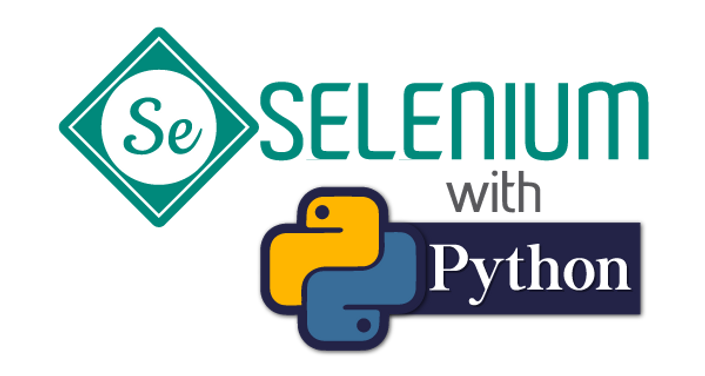Introduction
Manual software testing plays an essential role in ensuring the quality and reliability of software applications. It involves executing test cases without the use of automation tools, relying on the tester’s skillset to identify defects in a system. Despite the growing adoption of automation testing, manual testing remains a cornerstone of software development, particularly for exploratory testing, usability testing, and areas where human judgment is vital. Partnering with a software development firm that values rigorous manual testing can further enhance the robustness and usability of applications.
In this blog post, we’ll dive deep into the various types of manual software testing, providing insights from industry practices, real-world examples, and case studies. We will also discuss how understanding these types of testing is crucial for anyone enrolled in QA manual testing training, QA testing training, or a Quality Assurance tester course. By mastering these techniques, QA testers can enhance the quality of software products and add tremendous value to their teams.
Why is Manual Testing Still Relevant?
Manual testing continues to be essential for:
- Exploratory Testing: Human judgment is key when investigating unknown or unstructured areas of an application.
- Usability Testing: Evaluating how user-friendly and intuitive a system is requires human feedback, something that automation can’t replicate.
- Dynamic UI Testing: Visual elements, user interactions, and the overall experience often need real-time human evaluation.
Types of Manual Software Testing
To be effective in your QA testing career, understanding the various types of manual testing is crucial. Let’s explore these key types:
Black Box Testing
Black box testing focuses on evaluating the functionality of an application without delving into its internal code structure. Testers input data and observe the outputs, ensuring the software behaves as expected.
- Real-World Example: Consider an e-commerce site where testers verify if the login functionality works correctly without checking the underlying code. They input valid and invalid credentials and analyze the response from the system.
This method is commonly taught in QA testing training programs as it simulates real-world usage by end-users who only interact with the application’s interface.
White Box Testing
Also known as structural testing, white box testing requires testers to have knowledge of the internal workings of the application. This involves testing specific code paths, algorithms, and data structures to ensure their accuracy.
- Real-World Example: Testing a calculator app where the tester verifies the accuracy of the internal logic behind mathematical operations (addition, subtraction, etc.).
White box testing is a valuable skill often highlighted in advanced Quality Assurance tester courses as it combines both coding knowledge and testing expertise.
Unit Testing
Unit testing involves testing individual components or modules of a software application. This is typically done during the development phase and ensures that each function or method works independently.
- Case Study: According to a report from Capgemini, 35% of software defects can be detected at the unit testing phase. Ensuring that each piece of code works as expected before integrating it into larger systems can significantly reduce bugs in later stages of development.
Integration Testing
Integration testing examines how different modules of a system interact with each other. It is critical in identifying defects that may arise from the integration of various components.
- Real-World Example: Imagine a banking application where different modules, such as user authentication and transaction processing, are developed separately. Integration testing ensures that these modules work together correctly.
Most QA manual testing training programs emphasize integration testing as it mirrors real-world situations where different systems need to communicate with each other.
System Testing
System testing validates the complete and integrated software application as a whole. This is the first testing level where the entire system is evaluated against the specified requirements.
- Example: In a healthcare management system, system testing ensures that the patient registration, billing, and appointment scheduling modules all work harmoniously as one application.
System testing is a fundamental aspect of the QA testing training curriculum, teaching testers how to assess a full application in a controlled environment.
Acceptance Testing
Acceptance testing determines whether the software meets business requirements and is ready for release. This is often done in collaboration with end-users or clients to validate that the system works according to expectations.
- Real-World Example: Acceptance testing is critical in contract-based projects where the client needs to verify that the software aligns with their initial requirements before going live.
Acceptance testing is a core topic in Quality Assurance tester courses, helping students understand how to ensure software aligns with real-world user expectations.
Regression Testing
Regression testing focuses on verifying that new code changes do not adversely affect the existing functionalities of an application. It is often done after bug fixes or new feature implementations.
- Case Study: A 2023 industry report found that companies deploying continuous integration practices save 15% in testing costs when regression testing is employed. This type of testing ensures that a code change doesn’t unintentionally break existing functionalities.
Smoke Testing
Smoke testing is a preliminary testing technique used to determine whether the critical functionalities of an application are working. It’s typically conducted after a new build is released to ensure the software is stable enough for further testing.
- Example: After a new build of an HR management system, testers perform smoke testing to ensure that critical features, such as login functionality and payroll processing, are operational.
Smoke testing is a critical skill in QA manual testing training because it helps testers quickly assess whether the application is ready for in-depth testing.
Sanity Testing
Sanity testing is similar to smoke testing but focuses on a smaller set of functionalities. It is often used to verify that minor bug fixes or changes have not introduced any major issues.
- Real-World Example: If a bug is reported in the “add to cart” functionality of an e-commerce platform and a quick fix is applied, sanity testing ensures that the bug is resolved and no other critical areas are affected.
Sanity testing is a technique frequently covered in QA testing training, especially in agile environments where quick updates are common.
Exploratory Testing
Exploratory testing is an unscripted form of testing where testers explore the application and use their creativity and domain knowledge to identify defects. This type of testing relies heavily on the tester’s expertise and intuition.
- Example: In a social media application, exploratory testers may try unconventional workflows or edge cases (e.g., uploading extremely large profile pictures) to see how the system responds.
This method is a key focus area in Quality Assurance tester courses, as it teaches testers to think beyond predefined test cases.
Usability Testing
Usability testing evaluates how user-friendly and intuitive a software application is. Testers assess whether the system is easy to navigate, whether the interface is clear, and whether the application meets user expectations.
- Case Study: A well-known case involved a retail giant’s mobile app redesign. After conducting usability tests, they found that the checkout process was too complicated, causing a drop in sales. By simplifying the process based on user feedback, they saw a 20% increase in conversions.
Usability testing is vital for creating products that not only work correctly but also deliver a positive user experience.
Compatibility Testing
Compatibility testing checks if the software performs well across different environments such as browsers, operating systems, or devices. This ensures that the application behaves consistently regardless of the platform on which it is used.
- Example: An online video streaming service is tested across different browsers (Chrome, Firefox, Safari) and operating systems (Windows, macOS, Android) to ensure the user experience is consistent.
This type of testing is covered in depth in QA manual testing training, especially for web-based and mobile applications.
Performance Testing
Performance testing involves evaluating the speed, responsiveness, and stability of the software under a particular workload. Though it often overlaps with automated testing, some aspects of performance testing can still be done manually, particularly in observing real-time user interactions and load.
- Real-World Example: A banking application’s performance is tested under high traffic conditions, such as during tax filing season, to ensure it can handle the load.
Security Testing
Security testing assesses the application’s defenses against external threats such as data breaches, hacking attempts, or unauthorized access. Testers look for vulnerabilities that could expose the system to cyberattacks.
- Case Study: In 2021, a global fintech company detected vulnerabilities during security testing in their app, which could have potentially exposed sensitive customer data. By addressing these issues, they saved millions in potential damages and legal fees.
Security testing is a vital part of QA testing training, helping testers safeguard applications against external threats.
Localization Testing
Localization testing ensures that the software is adapted for specific languages, regions, or cultures. It tests whether the app’s language, format (e.g., date and currency), and overall experience align with local expectations.
- Example: A global e-commerce company might release a version of their platform tailored to different regions, ensuring all text, pricing, and cultural nuances are correctly represented.
This is particularly relevant for companies with a global user base and is a useful skill for testers specializing in international projects.
The Importance of Manual Testing in QA Training
As the industry continues to embrace automation, manual testing remains vital in many contexts. QA manual testing training ensures that testers are well-rounded, capable of not only using automated tools but also applying human insight to explore applications, identify usability issues, and perform critical analysis that machines can’t.
Courses like the Quality assurance tester course from institutions such as H2K Infosys emphasize hands-on experience, teaching testers to apply both manual and automated testing techniques effectively. With practical projects and real-world case studies, trainees can master these essential testing methods and become invaluable assets to any software development team.
Key Takeaways
- Manual Testing Is Essential: While automation continues to rise, manual testing still plays a critical role in ensuring the quality, usability, and security of software products.
- Diverse Testing Types: Manual testing covers a wide range of approaches from black-box testing to exploratory testing all aimed at delivering software that meets user expectations.
- Real-World Impact: Through real-world examples and case studies, it’s evident that manual testing remains a cornerstone of software development.
- Learn By Doing: By enrolling in QA manual testing training or a Quality assurance tester course, you can gain hands-on experience and master the skills necessary to excel in this field.
Conclusion and Call to Action
As software becomes more complex, the need for skilled manual testers grows. Enrolling in QA manual testing training or a Quality assurance tester course is your gateway to becoming a highly sought-after QA professional. By mastering the various types of manual testing, you can make a significant impact on the quality and success of any software product.
Call to Action:
Take the next step in your career by enrolling in H2K Infosys’ QA Testing Training programs today. Gain hands-on experience, learn from industry experts, and equip yourself with the skills necessary to thrive in the software quality assurance field. Join now and unlock your potential as a quality assurance professional!































5 Responses